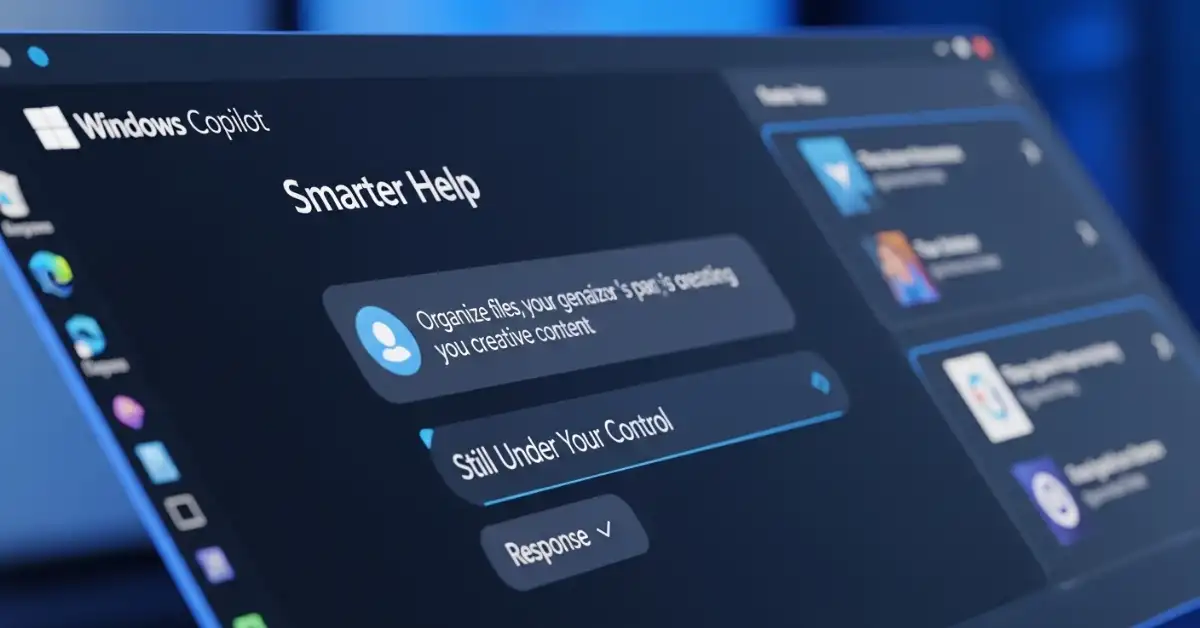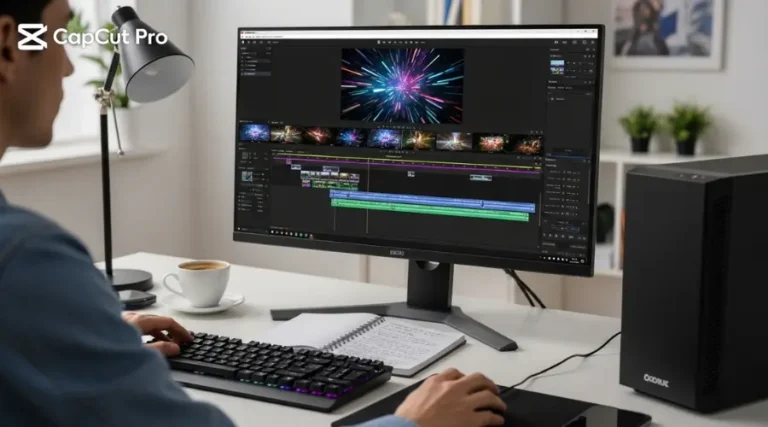Copilot in Windows Insider | Smarter Help, Still Under Your Control
Microsoft’s AI assistant, Copilot, is now an important part of Windows. In the latest Windows Insider build, it helps you find system settings faster and easier than before. This update makes moving through the Windows Settings app quicker, smoother, and more user-friendly as long as Copilot focuses on guiding you and doesn’t make changes by itself.
In this guide, we’ll explore how Copilot now integrates with the Settings experience, how it keeps your control intact, and what steps you can take to use it safely.
What’s New in Windows Insider Builds
The Windows Insider program lets users try new Windows features before they’re officially released. In the latest build, Microsoft has added a helpful new feature: Copilot can now help you find specific settings just by using simple natural language commands.
You can simply ask:
- Open Bluetooth settings.
- Show me the display brightness.
- Take me to sound options.
Instead of clicking through layers of menus, Copilot opens the exact settings page for you. It’s designed to save time and make Windows easier to use, especially for users who aren’t familiar with every menu layout.
How Copilot’s Settings Assistance Works
This new feature works through direct system integration. When you make a request, Copilot understands what you want and takes you to the right settings page using Microsoft’s built-in commands.
Here’s how it works:
- You can ask something like “Change my wallpaper” or “Open privacy settings.”
- Copilot figures out what you mean and finds the correct section in the Windows Settings app.
- It then gives you a direct link or opens that page, but it won’t change anything unless you do it yourself.
This makes managing settings fast, simple, and safe, giving you full control while saving time.
Why This Update Matters
Simplified Navigation
Many Windows settings are hidden behind multiple categories. Copilot eliminates the guesswork by taking you straight to what you need.
Faster Access
You don’t need to remember where each setting is located. Just ask Copilot, and it finds the page instantly.
Better Accessibility
For new users, this is a huge usability improvement. Instead of memorizing paths like Settings → System → Display, you can use natural commands like “Open display settings.”
Seamless Integration
This isn’t a separate app or add-on — it’s built into Windows, blending naturally with the operating system’s existing interface.
Staying Safe | Copilot Should Assist, Not Control
While AI-powered features can be convenient, safety and control are key. You want Copilot to help you find settings, not change them automatically.
Microsoft designed Copilot’s settings integration to follow a strict boundary:
- Copilot guides, you decide.
- No changes are made until you click or confirm.
- All adjustments still happen through the normal Windows interface.
So, even if you say something like “Turn off Bluetooth,” Copilot won’t immediately do it. Instead, it will open the Bluetooth page and let you make the change yourself.This keeps user control front and center — a reassuring design choice for anyone cautious about automation.
How to Use Copilot to Find Settings
Step 1: Open Copilot
Click the Copilot icon on your taskbar or use your keyboard shortcut to open it.
Step 2: Type or Speak a Command
Ask something natural, such as:
- “Change wallpaper.”
- “Open sound settings.”
- “Where can I manage notifications?”
Step 3: Review Copilot’s Response
Copilot will either give you a direct link or say, “Here’s where you can do that.” Click the link, and you’ll be taken to the correct Settings page.
Step 4: Make Adjustments Manually
Once you’re there, you can modify the settings yourself — ensuring nothing changes without your permission.
Common Queries Copilot Can Handle
Here are some quick examples of commands that Copilot can help with:
| Task | Example Command | What Copilot Does |
|---|---|---|
| Display | “Adjust screen brightness.” | Opens the Display page |
| Bluetooth | “Pair a new device.” | Opens Bluetooth & Devices |
| Network | “View Wi-Fi options.” | Opens Network & Internet |
| Privacy | “Manage camera access.” | Opens Privacy settings |
| Updates | “Check for updates.” | Opens Windows Update |
This feature saves time whether you’re configuring your network, checking updates, or managing accessibility options.
Tips for Safe and Smart Use
Here’s how to get the best experience while keeping full control:
Review Before Confirming
Always check what Copilot is suggesting before you click. It should only navigate, not act on your behalf.
Keep Your System Updated
New Insider builds refine Copilot’s understanding and security boundaries. Staying up-to-date ensures you get the safest experience.
Avoid Over-Delegation
Think of Copilot as your guide, not your operator. It’s best used to find pages — not to perform complex system changes automatically.
Use Clear Commands
Simple, direct phrases like “Open sound settings” work best. Ambiguous requests may confuse the AI or lead to extra clarifications.
Provide Feedback
If Copilot misinterprets a command or navigates incorrectly, use the feedback option. This helps Microsoft refine the feature for everyone.
What Copilot Should Never Do
Even as AI grows more capable, certain boundaries must always remain:
- No silent changes: Copilot should never modify settings without user approval.
- No registry edits: Only surface-level navigation through approved APIs should be allowed.
- No background access: Copilot should not run hidden processes to adjust configurations.
- No permission bypass: If admin access is needed, it should ask for your confirmation.
These principles protect both your privacy and your system stability.
Why This Is a Step in the Right Direction
This update creates a smart balance between automation and user control. By allowing Copilot to show where settings are instead of changing them, Microsoft helps users stay in control while making Windows easier to use.
It makes using Windows feel more natural and conversational without taking control away from you. You can still adjust everything yourself Copilot just helps you do it faster and more easily..
Example Walkthrough
Let’s walk through a simple example:
- You type: “Open battery settings.”
- Copilot replies: “You can manage your battery usage here.”
- It displays a link to the Battery settings page.
- You click the link — Windows Settings opens directly on the correct screen.
- You decide whether to turn on Battery Saver or change screen timeout manually.
That’s it — no guesswork, no hidden changes.
Advantages of Copilot for Everyday Users
Time-Saving Efficiency
Skip the endless menu searching and let Copilot take you exactly where you need to go.
Reduced Frustration
No need to remember where Microsoft moved a specific setting after each update.
Accessibility Friendly
Users with limited technical experience or accessibility needs can interact more easily using voice or text.
Consistent Experience
Regardless of layout updates, Copilot always knows the correct path.
Future Outlook
This new ability is likely just the start. Future versions may allow Copilot to help users configure settings more intelligently — but with proper consent built in. For now, Microsoft’s careful rollout ensures that you remain in control, while AI simply speeds up the process.
It’s a smart, balanced move toward more conversational computing without losing the transparency that users expect.
Conclusion
Copilot’s new Settings navigation feature in Windows Insider builds is a great improvement. It helps you find system controls quickly, saves time, and makes Windows easier to use, all while keeping you in full control. As long as Copilot continues to guide instead of making changes on its own, it’s a smart and safe upgrade that makes managing your PC simple and secure.







